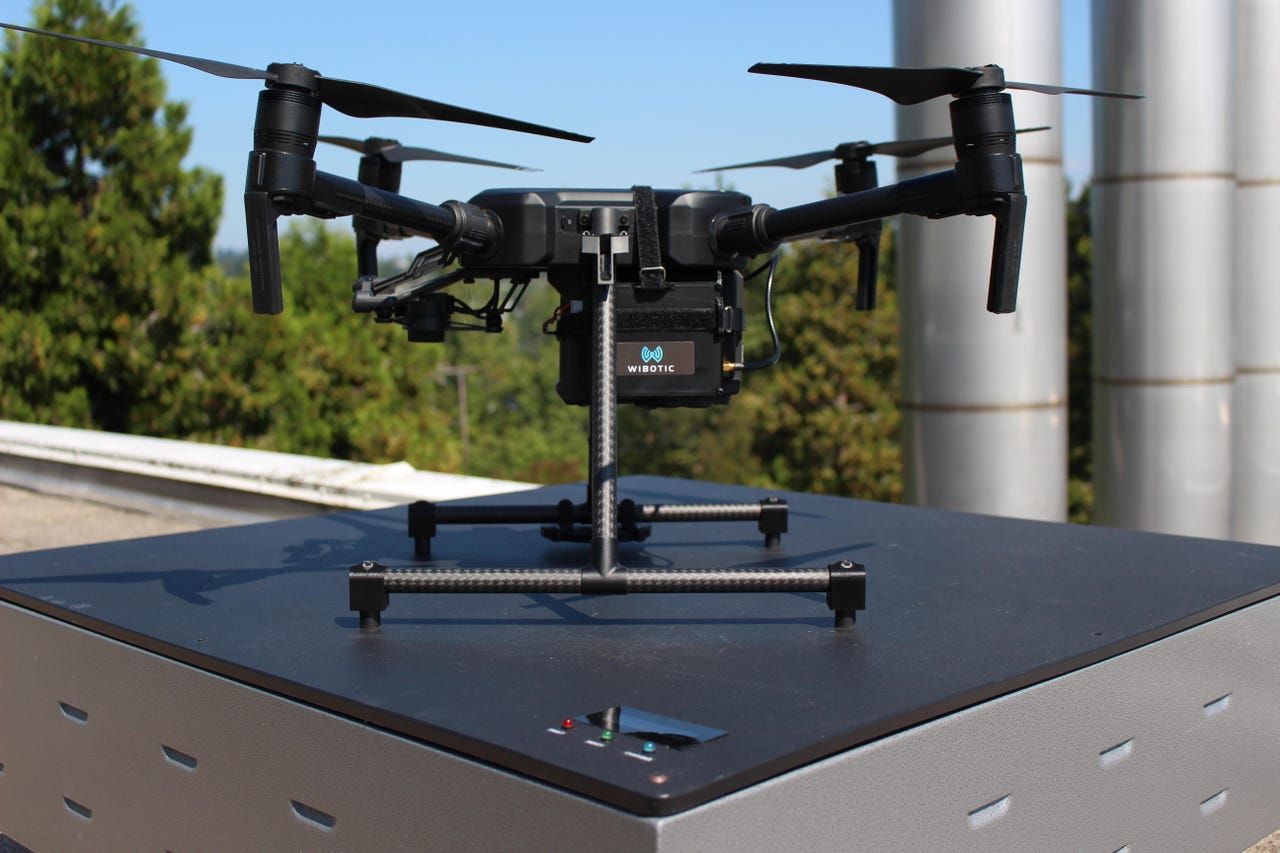Cord cutting: Wireless charging hits booming robotics sector


You can charge your phone wirelessly. Why not your robot?
Well, now you can. Wireless charging is increasingly being deployed throughout the robotics sector, and one of the companies at the vanguard of cord cutting just closed a Series A. What's interesting here, and worthy of note for industry-watchers, is the diversity of automation categories wireless charging might apply to, as well the impact the technology could have on adoption and implementation.
WiBotic, based in Seattle, snagged $5.7 million in Series A funding. The company's wireless charging technology caters to the rapidly expanding automation sector, including aerial, mobile and marine robots and drones. I wrote about the tech in 2018. Back then, Waypoint Robotics, which makes custom mobile robots for the supply chain industry, unveiled its EnZone Wireless Charging Dock, which was powered by WiBotic's inductive charging technology.
The company was just building a reputation after unveiling a wireless charging pad capable of keeping drones in the air indefinitely. Inductive charging could have an increasing role in keeping robots working without requiring they return to a fixed dock.
"Think back to Physics 101," WiBotic CEO Ben Waters explains in an article published on the company's site. "You may recall that alternating electrical current creates an electromagnetic field as it flows through a conductor. If a second conductor is placed alongside the first, the electromagnetic field will induce electrical current in the second conductor as well.
"By coiling the wire, and changing the number of coils between the primary and secondary wire, electrical energy of one voltage can be converted into another voltage. This is the principle behind electrical transformers -- and is essentially the same concept behind wireless inductive charging."
Transmission range is a function of the size of the coils, meaning it can be flexibly adapted to suit various applications.
The Series A comes at an interesting time for the robotics sector. Lockdowns associated with the pandemic have largely recast the automation sector, long viewed as potentially deleterious to human workers, as a savvy way to safeguard against labor and legislative uncertainties. The robotics market may be looking at a big moment of growth as companies begin coming back online and reassessing their operations.
"WiBotic will use the Series A funding to accelerate the company's growth, expand our sales team, advance hardware and software engineering, and fulfill increased customer demand," said Ben Waters, WiBotic CEO. "Our mission is to power the world of autonomous systems. By providing mission-critical technologies for autonomous charging and fleet energy management, we help organizations quickly scale-up robotic fleets, improve robot uptime while reducing recurring charging and maintenance costs. Our successful Series A funding accelerates our innovation and growth to ensure we lead the charge in powering autonomous systems."
I'll be watching for real-world implementation of the technology, which has the potential to super charge automation.